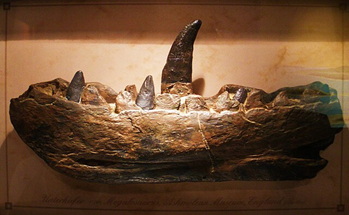What can these portraits tell us about the thrice mayor, John Nixon?
These are the portraits of John Nixon (1588-1662), who was a mercer (cloth merchant), and three-times mayor of Oxford and his wife Joan (died 1671). The council commissioned them as an expression of gratitude as Nixon had recently founded a school. The school was for twenty boys who were the sons of freemen, many of whom sat on the city council. The monies were agreed in the 1658 council, and the decision is reflected in the council minutes as they state that the portraiture or pictures of the aid alderman Nixon and his now wife “whoe hath givne grate incouragement to his worke Charity bee fairly drawne”.
The portraits are attributed to John Taylor who would have been commissioned by the council and carried out similar types of work for the university. Taylor was a limner painter and was influenced by Samson Strong’s portraits, another local painter. Many of these types of portraits were commemorative rather than an accurate representation of the subject. Instead, these portraits’ key aspects were to create a striking depiction through the clothes, the bearing of the subject and anything else that was on show. These portraits were also designed to promote the sitters’ virtues and achievements. John Nixon was known as a zealous puritan, so the portrait would have been designed to promote what he would have seen as godly virtues: helping the poor and promoting learning. The portraits could have also been commissioned to recognise his varied career as he had put his beliefs into practice. He was actively involved in addressing poverty within the city and in 1621 was responsible with three others to see that the tools and instruments of punishment for the idle are provided at the city’s church for the inmates of the house of correction’.
In 1642, when Charles I set up government in Oxford, he had to leave Oxford despite providing powder for the King. This was probably due to him being a known puritan and potentially a parliamentary supporter. He returned to the city as mayor in 1644/45 when the city was taken over by the anti-royalist Lord Sayre. However, he had to flee again to Abingdon when royalist troops reentered the city. Subsequently, his replacement received a letter from the King saying that certain council members had joined the rebellion, including Nixon. Charles I went onto recommend that Nixon, among others, was disenfranchised. This was agreed upon, and he also forfeited any offices he had held. When he returned again this disenfranchisement was repealed and in 1646, he became Oxford’s Member for Parliament.
The portrait was painted when Nixon was about 70, and much of the clothing and the symbolism emphasises the seriousness of the role. It depicts him standing to the left, half wearing a tall hat and a red gown. His hand is resting on a ledge arch with a classical pillar in the background. His clothing emphasis the solid respectability of the sitter. It is also painted in the heraldic colours of white, red and black. The reasons for using these colours was partly due to the fact that they were part of a widely understood symbolism. They also promoted the sitter’s virtues and status and hence the right to govern the local area. This is depicted by the red mayoral gown being the most striking feature of the painting and indicating a person of importance. Red was meant to symbolise courage not just on the battlefield but also in public office, and black symbolised prudence. Both of these virtues Nixon would have needed at the time to survive in public office. The pillar could also symbolise fortitude, which was part of the council’s motto.
His portrayal is typical of this desire to promote an image of authority, achieved through the rigidity of features. There is a certain level of realism within the face, but it is not a ‘warts and all’ portrait. The portrait is not as two dimensional as previous portraiture, but the emphasis is still on promoting civic authority. His wife, Joan’s portrait, is more typical of previous portraiture with flat and rigid features, and she is wearing a typical puritan dress. She is also holding a book, perhaps emphasising the families desire to promote education and learning.
Written by MOX volunteer and PHD student Amy Moore.
Want to write your own Oxford-inspired post? Sign up as a volunteer blogger.



